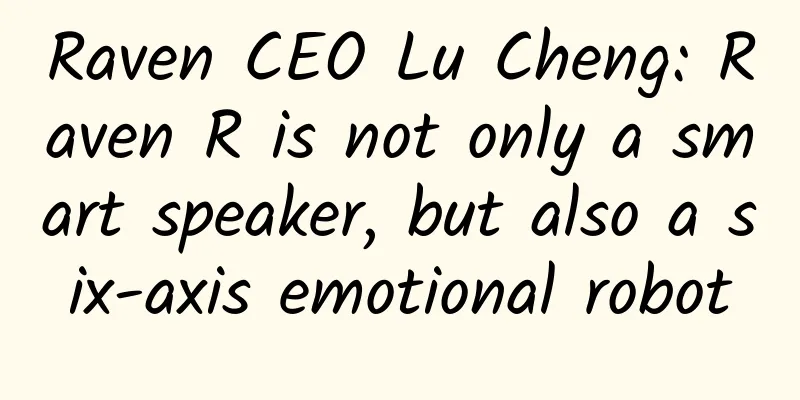The beautiful and "useless" Möbius inversion solves a class of physics problems [Part 1]
![The beautiful and "useless" Möbius inversion solves a class of physics problems [Part 1]](/upload/images/67f203bccd3cd.webp)
|
“Number theory provides us with an inexhaustible supply of interesting truths—truths which are not isolated but closely connected, and which, as our knowledge grows, we shall continually discover new and sometimes totally unexpected connections between them.” ——Gauss Written by Ding Jiu (Professor of Mathematics at the University of Southern Mississippi) Readers, please roll a piece of paper into a cylinder, then find a pencil head and place its bottom against the outside of the cylinder, with the tip of the pencil facing outward and perpendicular to the cylinder. If you keep the two perpendicular and move the pencil around the cylinder, or more generally, let the pencil be perpendicular to the cylinder and move along any closed curve on it that does not cross the boundary circle, you will find that the direction of the pencil tip changes continuously and finally returns to the original position. If you place the bottom of the pencil head against the inner surface of the paper cylinder and do the same thing, the result is the same. This shows that the cylinder is "double-sided", with an inner side and an outer side. By specifying the fixed side of one of its two sides, the orientation of any closed curve on the surface is determined by the "right-hand rule" - the positive direction and the reverse direction. This is a geometric phenomenon that every child can understand. Readers who have studied surface integrals know that the surface used as the integral area must be determinate, otherwise the surface integral is out of the question. In the 1980s, Professor Li Tianyan, my doctoral dissertation advisor at the Department of Mathematics at Michigan State University, told me that this is how he taught his son in junior high school to get started with topological concepts: take a long, narrow piece of paper, and instead of sticking the two short opposite sides together to form a short cylindrical surface as above, first twist one of the short sides 180 degrees and then stick it to the other short side. This also yields a paper surface. Then he asked his son to do the same experiment as in the previous paragraph, and found that when the pencil follows a closed circuit that is almost the same direction as the long opposite sides and keeps perpendicular to the surface and continuously goes around once, the direction in which the pencil tip ends is exactly opposite to the initial direction! Of course, this phenomenon will not occur when the closed circuit is small enough to be just a circle around a point on the surface. However, the existence of the closed circuit that causes the "reversal of direction" anomaly fully demonstrates that this strange surface has topological properties that are completely different from those of an ordinary cylindrical surface. This strange surface is "one-sided" and is not allowed to enter by the guards of the surface integral room in the calculus building. However, it is not only visually intuitive, but also rich in connotation. Its professional name is the "Möbius strip", named after one of its discoverers, the German mathematician and astronomer August Ferdinand Möbius (1790-1868). Another discoverer who discovered it a few months earlier was the German mathematician Johann Benedict Listing (1808-1882). The Möbius strip is the most well-known mathematical discovery in Möbius's life because people can understand it at a glance. However, the Möbius inversion formula derived from his less well-known mathematical work is the subject of this article. Mobius inversion The original idea of the Möbius inversion formula is similar to the familiar series part and series and the general series of series. There are many generalizations and variations of the Möbius inversion formula, but the most famous and simple one is considered a "classic" and has many uses in number theory and combinatorics. In order to understand this original formula, we need to introduce a few elementary terms. First, the so-called "inversion" is a generalization of the concept of inverse function in middle school algebra. When the function y=f(x) is Möbius function <br /> Given the key role of the Möbius function μ in the inversion formula, let's explore its basic properties. First, let's get familiar with the first dozen numbers in the Möbius function value series: μ(1)=1, μ(2)=-1, μ(3)=-1, μ(4)=0, μ(5)=-1, μ(6)=1, μ(7)=-1, μ(8)=0, μ(9)=0, μ(10)=1, μ(11)=-1, μ(12)=0. The first basic property of the function is that it is multiplicative, that is, as long as two natural numbers m and n are relatively prime (no positive common factors except 1), the equation μ(mn)=μ(m)μ(n) holds. In fact, when This proves (I). From the function value g(n) of arithmetic function f to arithmetic function g, since the definition and inversion formula (I) are only expressed in the form of a finite sum, we only use the factors of the Möbius function and formula (1) to "elementarily" prove the Möbius inversion formula (I). In the same way, it can be proved that if f and g satisfy (I), then they also satisfy (*). People call g the Möbius transform of f, and f the inverse Möbius transform of g. Note that there is also an English mathematical term Möbius transformation, which is also translated into Chinese as "Möbius transformation". It refers to the linear fraction transformation w=(az+b)/(cz+d) that maps complex numbers into complex numbers. If f and g are replaced by In f and In g respectively in the Möbius transformation, then (*) and (I) imply the following Möbius inversion formula in multiplication form: Dirichlet convolution <br /> Readers who have learned Fourier transform will not be unfamiliar with the convolution operation between functions. The convolution f*g of two functions f and g is defined as the integral of the product of one function and the other function after reflection and shift, which shows how the shape of one function is changed by the other function. If the domains of f and g are the entire It is easy to prove that f*g=g*f, that is, the convolution operation satisfies the commutative law. The convolution theorem in Fourier analysis says that if F and G are the Fourier transforms of f and g respectively, then the inverse Fourier transform of the product of F and G is the convolution of f and g. There is also a similar convolution theorem for the Laplace transform commonly used in engineering mathematics. So, is the idea and method of convolution related to "Mobius inversion"? Of course! This is the Dirichlet convolution used for arithmetic functions in number theory. This concept is simply a direct generalization of the Mobius inversion. Its definition is very similar to the expression on the right side of the Mobius inversion formula (I), except that the Mobius function μ there is replaced by a general function: Let f and g be arithmetic functions, then the Dirichlet convolution of f and g is the arithmetic function In addition, Dirichlet convolution also satisfies the associative and distributive laws, just like integer multiplication: (f*g)*h=f*(g*h) and f*(g+h)=f*g+f*h. As far as the Dirichlet ring is concerned, if and only if an arithmetic function f satisfies f(1)≠0, it has a Dirichlet inverse, that is, there exists an arithmetic function f-1 such that f*f-1=ε. In particular, the Dirichlet inverse of the constant function 1 is the Möbius function μ, that is, the relationship 1*μ=ε required in the next argument. Here we have used 1 to represent the number of constants in the natural number set. It can be seen that in the context of Dirichlet convolution, the expression of the classic Möbius transform is: g=f*1 if and only if f=g*μ. Most science and engineering students probably know the name of the German mathematician Gustav Lejeune Dirichlet (1805-1859) from Fourier series or boundary value problems of partial differential equations, but don't mistake him for being only good at "analytical mathematics" like almost all mathematicians today who are only proficient in one craft. He was also a master of number theory and pioneered the branch of analytic number theory. The modern definition of function also originated from him, allowing middle school students around the world to benefit from this most reasonable definition today. Since the Möbius inversion is just a synonym for the fact that the Dirichlet inverse of the unit arithmetic function 1 is the Möbius function μ, the original Möbius transformation double formula (*) and (I) can be immediately generalized to the following general inversion formula: Assuming that the arithmetic function α has a Dirichlet inverse, then The second equal sign above is because we group by mn=k and rearrange the order of summation. The generalized form of the general formulas (#), (**) and (Ⅱ) corresponding to the discrete case is: This article is supported by the Science Popularization China Starry Sky Project Produced by: China Association for Science and Technology Department of Science Popularization Producer: China Science and Technology Press Co., Ltd., Beijing Zhongke Xinghe Culture Media Co., Ltd. Special Tips 1. Go to the "Featured Column" at the bottom of the menu of the "Fanpu" WeChat public account to read a series of popular science articles on different topics. 2. Fanpu provides a function to search articles by month. Follow the official account and reply with the four-digit year + month, such as "1903", to get the article index for March 2019, and so on. Copyright statement: Personal forwarding is welcome. Any form of media or organization is not allowed to reprint or excerpt without authorization. For reprint authorization, please contact the backstage of the "Fanpu" WeChat public account. |
<<: When did the ball in the mouse disappear?
Recommend
Mobile email APP Mail Master plays the warmth card to create a warm winter version for users
As Christmas approaches, the mobile email app Mai...
What’s the innovation behind Google’s new Android smart lock?
On March 23, according to foreign media reports, ...
Download videos in batches and earn 100,000 yuan a month
Seeing the title, many people may say, don’t writ...
If you don't do this, your risk of dementia will increase by 4 times! How to make your brain healthier?
Expert of this article: Zhao Wei, MD, associate c...
Brand Proposal: How to Write a Proposal Case Study
This is a proposal I wrote for a small appliance ...
5 ways to promote your brand!
Brand promotion is not just a high-sounding conce...
Upengpule's Coming-of-Age Ceremony Launches a New Interactive TV Business Model with "Upeng Cloud"
From 2006 to 2016, it has been 10 years since You...
How much does it cost to make the Baicheng Car Moving App? Baicheng car moving small program production price inquiry
WeChat Mini Program is an application that users ...
How do mini program development companies use mini programs to realize marketing scenarios?
How do mini program development companies use min...
Just now, complete success!
Expert of this article: Lin Wenjie, engineer, sen...
99% of traders have paid the price for these 5 pitfalls in live streaming sales!
Luo passed the baton of exceeding 200 million GMV...
App Promotion, How to Identify Channel Fraud—Data Analysis
I wrote an article before the holiday, analyzing ...
Survival within the system: "The director of the red dust department talks about the way to promotion"
Teach you how to survive in the system, plan your...
Is there always a strong smell in your car? Here are 5 ways to try!
Recently, many parents have asked us in the backg...
Interpreting ASP.NET 5 & MVC6 Series (10): Controller and Action
We know that in MVC5 and previous versions, the l...









